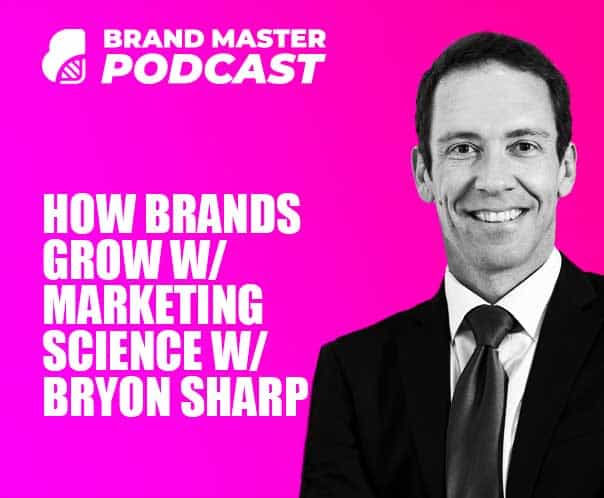If you’re asking the question “what’s the difference between target group vs target audience?”, then you’re not alone.
There are few industries where so many industry terms, with different meanings, are used so interchangeably as in branding and marketing.
Who you’re aiming to serve is a perfect example of that.
But before you go about identifying your future customers, you should be armed with the best tools to do so.
In this article, we dissect target group vs target audience so you can put this one to bed and get some clarity in your strategic brand building efforts.
Target Audience vs Target Groups
[The Video Breakdown]
One-click subscribe for video updates
Target Audience Definition

The target audience identifies:
The broadest targeted group of people who are most likely to want or need the solution a brand provides.
The broader the group of people the brand targets, the less specified they are, therefore the less likely they are to want or need the solution.
Target Group vs Target Audience
(What’s The Difference?)

So, first things first…
Are they the same thing or are they different?
The reality is, different industry players, different experts, different agencies in the world of branding and marketing use these terms in different ways.
Some use target group, others use target audience, while others use both depending on the context.
Although you wouldn’t be out of place in a marketing or branding agency using one or the other, technically there is a difference.
PRO Brand Strategy BluePrint
Build Brands Like A Pro Brand Strategist

Your Target Group Is Part Of Your Target Audience

When you refer to your target audience or target group, you’re referring to specific groups of people though one is more specified than the other.
The target audience is broader, while the target group is narrower.
What Is A Target Audience?

Your target audience is the entire group of people your brand identifies as the people who are most likely to want or need the solution your brand offers.
Essentially your target audience is everyone you want to target your brand messaging towards with the goal of acquiring as many of them as possible as new customers.
A target audience is not two-dimensional and not all the people in this audience are the same.
The broader the target audience, the more diverse the people are within it.
In fact, there may be many different “types” of people within your audience who can be categorized into more specific groups.
What Is A Target Group?

A target group is one of these more specified groups of people within your broader target audience.
They identify more defined and specific groups of people within the broader target audience of which there could be many.
These groups of people are more defined than the larger target audience; therefore messaging can be tailored more specifically.
Groups such as these are more aligned to each other with the problems and challenges they face than the broader audience and can therefore be targeted in more specific ways.
Although a broader based brand message directed at the larger target audience would likely strike a chord with all of the individual target groups, a more tailored message speaking directly to individual groups allow brands to resonate on a much deeper level.
Explore Brand Strategy
Programs & Tools
Your Target Audience Demographics Are Not Enough

Although your target audience is the broadest group of targeted people for your brand, the audience shouldn’t be so broad that your brand message doesn’t connect with them.
Demographics are the first port of call when defining your target audience.
Demographics are essentially a set of categorisation tools that filter out the people who are not your target audience.
Before you define your target audience, your target audience is everybody.
Then, using demographics such as
Age
Gender
Marital Status
Personal Income
Household Income
Occupation
You pull a broad group of people from the “everybody” group which excludes people who your brand doesn’t want to target or who are the least likely to want or need your brand solution.
But this isn’t enough. You can’t stop with demographics, as this demographic based group of people still contains a large portion of people, that don’t want or need your solution.
Why Psychographics Are Critical In Identifying Your Audience

The demographically filtered group of people need further refinement and the next level is achieved by leveraging psychographics.
While demographics exclude people based on their circumstances, psychographics add another layer of categorisation through behaviours.
By defining how your audience live their lives, you exclude people who don’t fall into that category, further defining the target audience and the group of people most likely to want or need your services.
Behaviours such as
Music preferences
Sports
Food Preferences
Pastimes
Books
News Sources
Magazine Publications
Car of Choice
Weekend Activities
All of these psychographics help to paint a more detailed picture of who your target audience is, so you can tailor your brand communication and messaging to them more effectively.
Your Target Audience Strategy Needs Emotion

By applying demographic and psychographic filters to your target audience, you’re left with a group of people who are beginning to represent your core target audience.
But this group of people is still not the finished article.
More detail is required, which will shape the way your brand will engage with them including your:
Messaging Strategy
Storytelling Approach
Human Brand Persona
Tone of Voice
Brand Language

The detail required from this point helps to shape your understanding of who the audience is.
While demographics and psychographics identify the group of people, they tell us very little about:
Who they are
The problems they live with
The challenges they face
The desires they have
The fears they carry
The emotional connection to these issues
It’s only when you begin to understand these critical factors that define the “Who” behind your audience, can you begin to strategize a way to resonate with them.
How Target Audience Analysis Reveals All

To get to the bottom of who your audience is, needs some hands on, roll the sleeves up kind of work.
They’re out there and you don’t have to look too far before you find what you’re after.
They’re online, positing, contributing, sharing, leaving trails, clues and insights for you to discover.
Using the group of people you’ve identified, what their circumstances are and how they spend their time you can find groups and congregations you can tap into.
This is where you’ll find your audiences’ emotions.
Of course they won’t be spilling their guts for the world to see in their posts, but sure enough, they’ll be leaving insights into their challenges and struggles which lead back to the emotions associated with them.
There is some investigative work in effective target audience analysis but if you plan on building a brand built to resonate and make connections; this is where such brands are born.
Conclusion
No doubt if you’re trying to understand target group vs target audience, you’re in the development phase of building a brand.
It’s essential you have a firm grasp of the different target audience, market, groups and segments to identify an audience with the right level of specificity, insights and emotion.
What about you? Do you have a preferred technique you use to identify your target audience or target groups?
What’s your greatest challenge around defining your target audience and is there something holding you back.
Let me know in the comments Right Now!
On-Demand Digital Program
Brand Master Secrets
Make the transition from hired-gun to highly valued brand strategist in less than 30 days. The systems, frameworks and tools inside this comprehensive program are all you need to level up.








